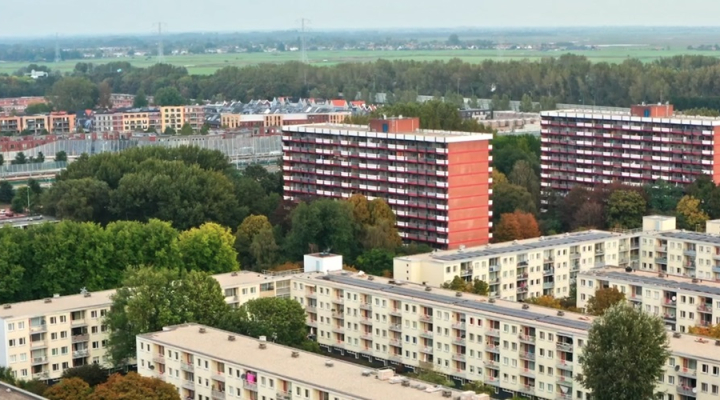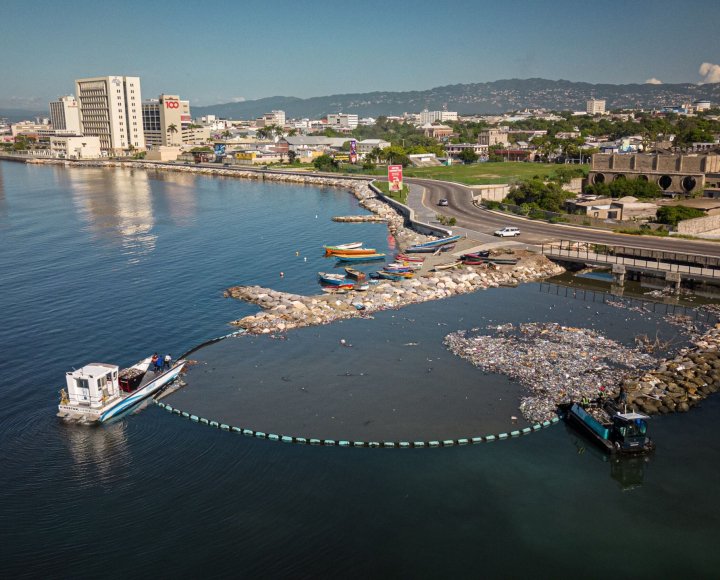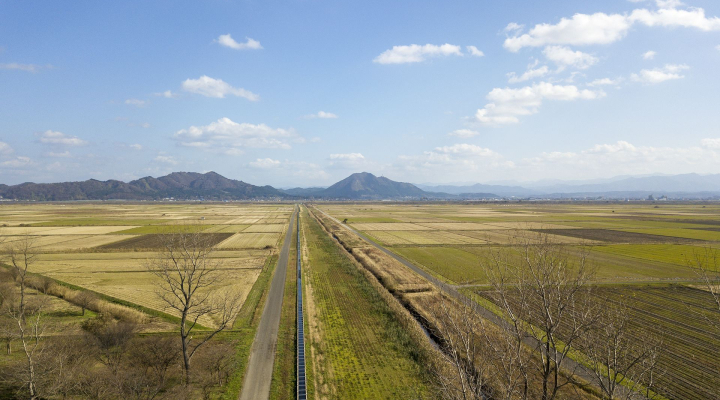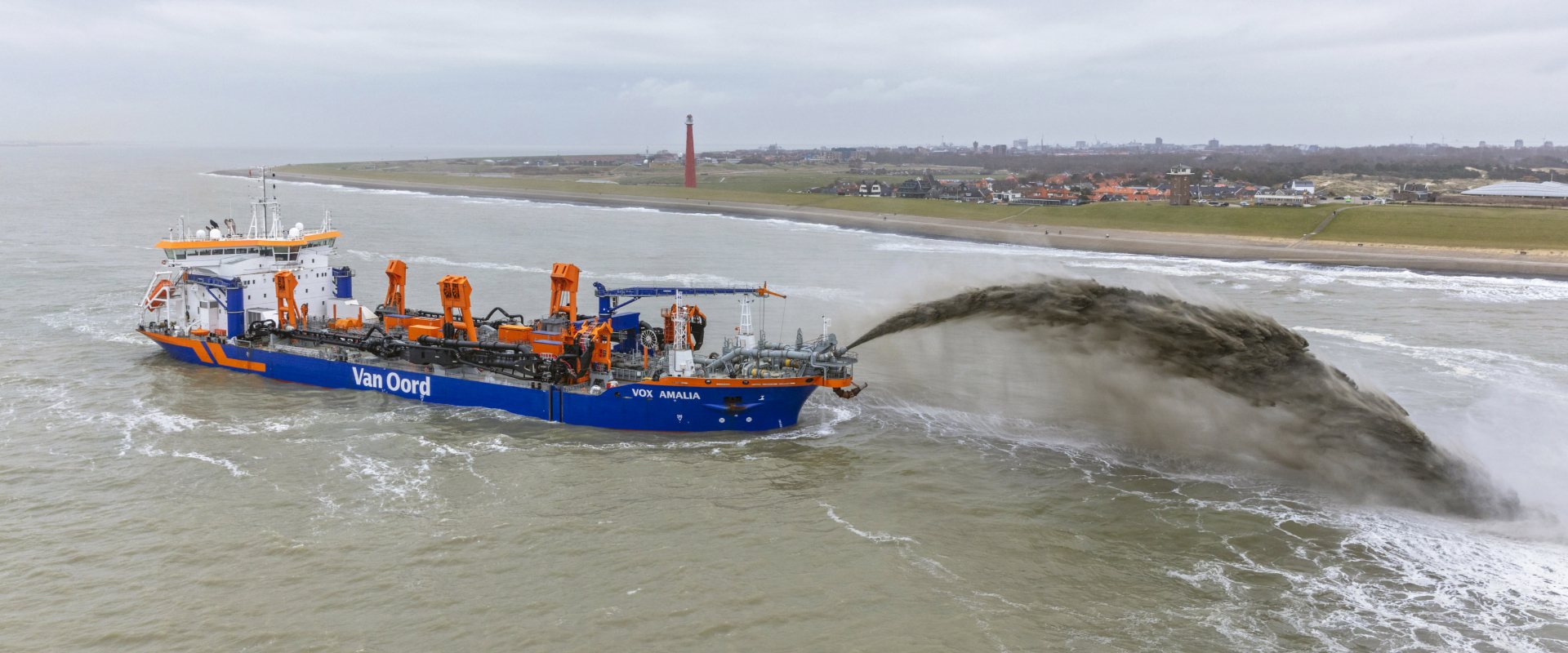
First job for dredger Vox Amalia
Van Oord's trailing suction hopper dredger Vox Amalia successfully started its first sand nourishment project along the Dutch coast, near Den Helder.
The brand-new self-supporting vessel is reinforcing the coastline by placing more than 3.5 million cubic metres of sand in a deep coastal rip channel caused by erosion.
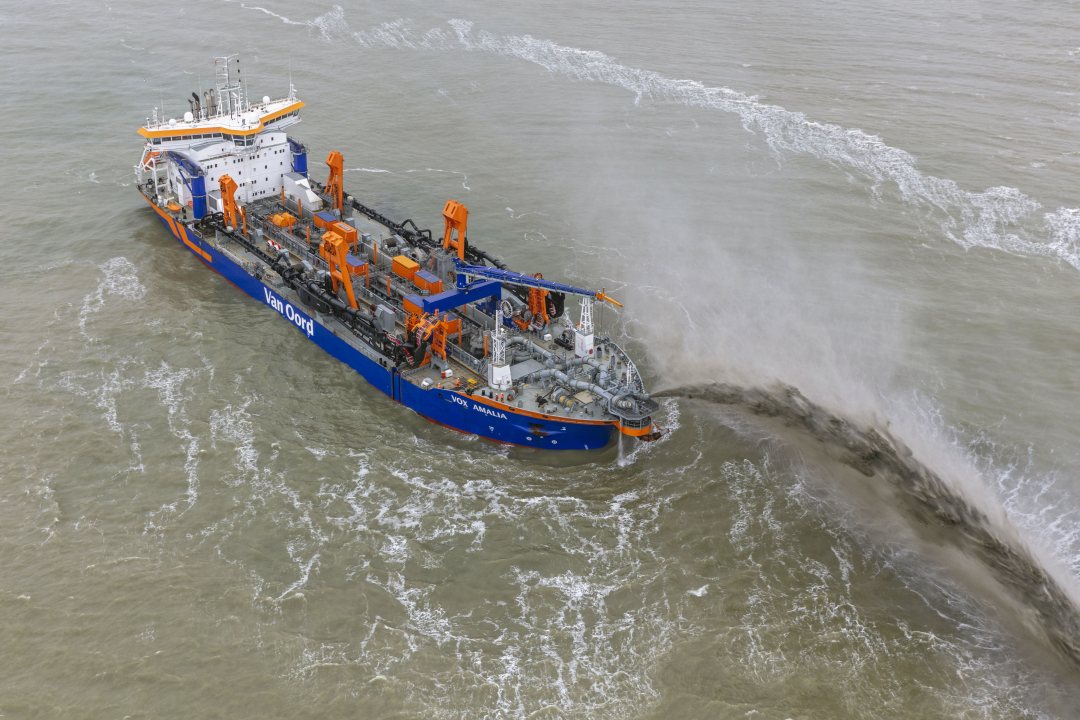

Multipurpose dredger
With a load capacity of 18,000 cubic meters, the Vox Amalia adds to Van Oord’s fleet as one its smaller capacity vessels. It has been designed relatively wide (34 m), limiting the maximum draft to 10.54 meters. This makes it possible for the vessel to operate closely to the coast or other shallow waters.
Another remarkable aspect of the design is the power to move, it is possible to dredge not only sand, but also hard materials such as clay and rocky ground. Also notable is the strong suction pipe that can be equipped with various types of drag heads.
Release of dredging material
The Vox Amalia can unload its content in four ways. It has six bottom doors for an immediate release to the sea floor. Another option is to pump the content to the shore via a floating pipe. As a shallow draft ship it can come close to the shore and spray the sand on the beach (rainbowing).
A fourth option is to reverse the use of the drag heads and pump sand or gravel from the ship to the seabed. Using the drag heads allows a very accurate under water release, for instance to cover cables or pipelines.
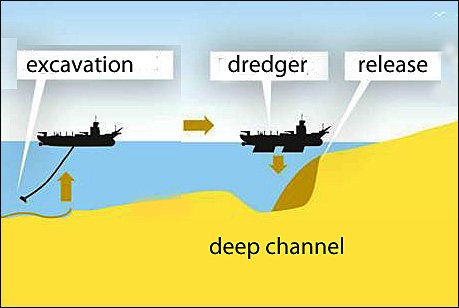

Filling deep channel
The first sand nourishment project for Vox Amalia was awarded by Rijkswaterstaat, the operational arm of the Dutch Ministry of Infrastructure & Water Management. The project is part of an ongoing programme to maintain the Dutch coast at its 1990 position, repairing storm damages and compensating for sea level rise.
Every 4 years, Rijkswaterstaat draws up a plan to apply beach nourishment on locations where the coast has decreased. The project in Den Helder concerns the filling of a dangerous deep channel in the nearshore that has been created by the underflow of waves moving towards the sea.




